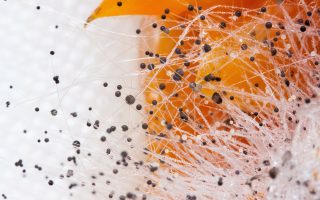
While it has always been known that exposure to mold is far from healthy, new research continues to demonstrate just how hazardous mold in homes with young children can be. One of the most concerning findings of recent years is the link between mold exposure in infancy and the development of asthma in later childhood. Infants who are exposed to high levels of mold by the age of 8 months are more likely to develop asthma by the time they are 7 than other children.
Although the mechanism by which mold contributes to asthma development remains unknown, the evidence for such a connection is quite strong. Even without this risk, having certain varieties of mold in your house could be dangerous. Mycotoxins produced by mold have been linked to everything from acute toxic poisoning to higher long-term risks of certain cancers. As a result, it’s important for all homes, especially those with young children, to take steps to prevent mold growth..
What Makes a Home Turn Toxic?
Not all mold is hazardous to one’s health, nor do all homes wind up playing host to mycotic cultures. But once mold starts growing in your home, it can quickly affect your health. Anywhere there is humidity and insufficient ventilation, mold spores can take over. Since mold can grow on any organic material provided sufficient moisture, even materials in areas which are not readily visible, like roof materials above ceiling tiles and flooring below carpet. The insulation in air ducts can also be mildewed and rotting, resulting in increased respiratory and other health complaints.
Combating Mold in Your Home by Minimizing Excessive Moisture
The key to avoiding mold in your home (or place of work) is keeping humidity low. Making sure there is sufficient ventilation in all rooms can be a tricky task; even seemingly harmless houseplants can encourage the growth of mold. But before you throw out your favorite decorative plants, be aware that there are a number of ways to combat excessive moisture indoors. If certain areas lack sufficient windows, you may want to supplement the airflow with a dehumidifier or fan to minimize excessive humidity in your home. For rooms that will inevitably get damp, like bathrooms, it is advisable to avoid carpeting, which will be hard to dry out and so encourage the growth of mold. If mold is found in the home, it should be cleaned up with bleach as quickly as possible.
Insofar as the presence of mold in a home has been positively linked with the development of childhood asthma, it is vital that mold not be allowed to grow unchecked in homes, schools, and workplaces. Although it is not necessarily proven that mold causes asthma and other health conditions, the strong correlation between the presence of mold spores and prevalence of respiratory distress, certainly implies that mold, at the very least, exacerbates symptoms.
While there is nothing we can do to avoid our genetic fate, investing in fans or dehumidifiers and cleaning air ducts now may prevent serious health problems down the line. For mold protection, we recommend coverage from a high-quality HEPA air purifier such as the Amaircare 3000 or Austin Air HealthMate. Purifiers that feature a VOC canister can also help to control odors, making your home more livable while you are tackling an existing mold problem.
Have questions about using air purifiers to protect yourself and your children from mold? We’re here to help! Simply contact us with your questions to receive answers and personalized product recommendations.
Note: This article was contributed by guest writer Jennifer Ally